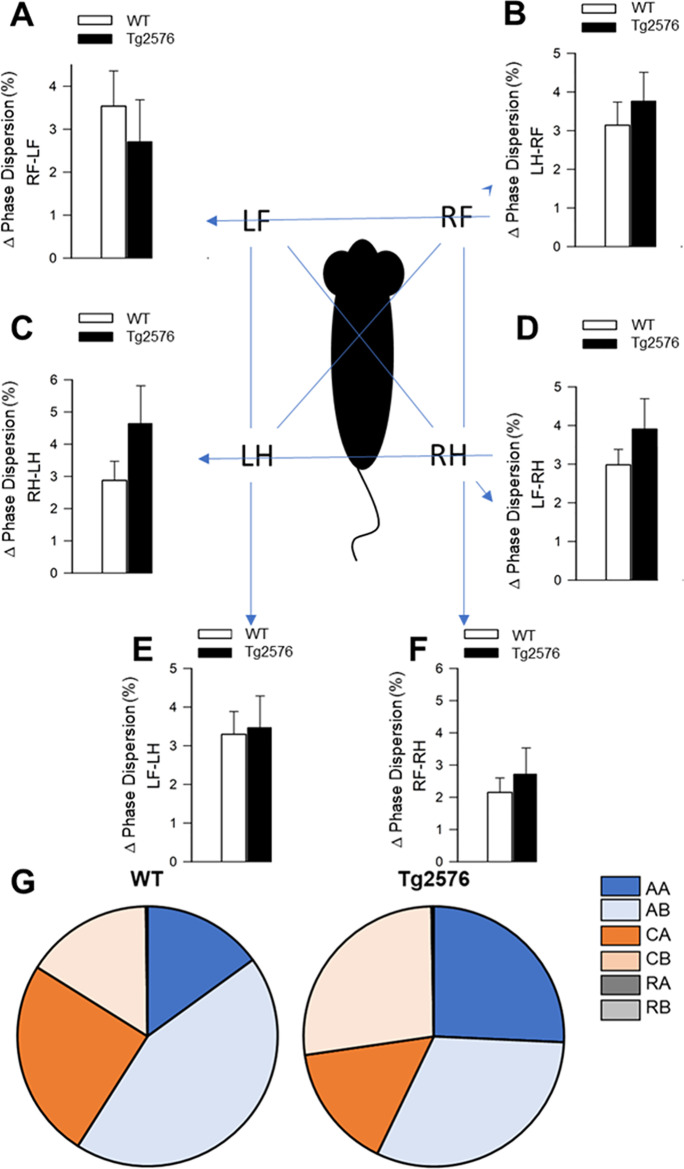Fig. 3.
Inter-limb coupling in the Tg2576 mouse model of AD. (A–F) Inter-limb coupling during spontaneous walk in 10-month-old Tg2576 mice and control wild type mice. To assess genotype-related impairment of gait coordination, we compared the degree of synchronization between diagonal, horizontal and lateral limb couplets in each group. Inter-limb coupling was assessed by computing the interval between onset times of each paw in a couplet contacting the floor. As an index for asynchronous stepping, the absolute deviation from the expected coupling value was calculated. For example, if diagonal limbs move synchronously, the expected value of inter-limb coupling is 0. In contrast to diagonal limb pairs, lateral pairs are known to alternate during walking. When the two limbs alternate perfectly, the inter-limb coupling value is 50%. Bar graphs are summary data, indicating that WT mice showed a narrow distribution around the expected value, Tg2576 tended to exhibit a more dispersed distribution. (G) Mice utilize six different gait footfall patterns (Cruciate [Ca paw sequence: RF—LF—RH – LH and Cb paw sequence: LF—RF—LH – RH]; Alternate: [Aa paw sequence: RF—RH—LF – LH and Ab paw sequence: LF—RH—RF – LH]; Rotate: [Ra paw sequence: RF—LF—LH – RH and Rb paw sequence: LF—RF—RH – LH]. The relative frequency of footfall patterns utilized by mice in each group is shown, Tg2576 mice the frequency of preferred step sequences was altered, as they used more frequently the radial AA and the alternate CB pattern than wild type control mice and compensated with a decreased use of the AB and CA pattern

